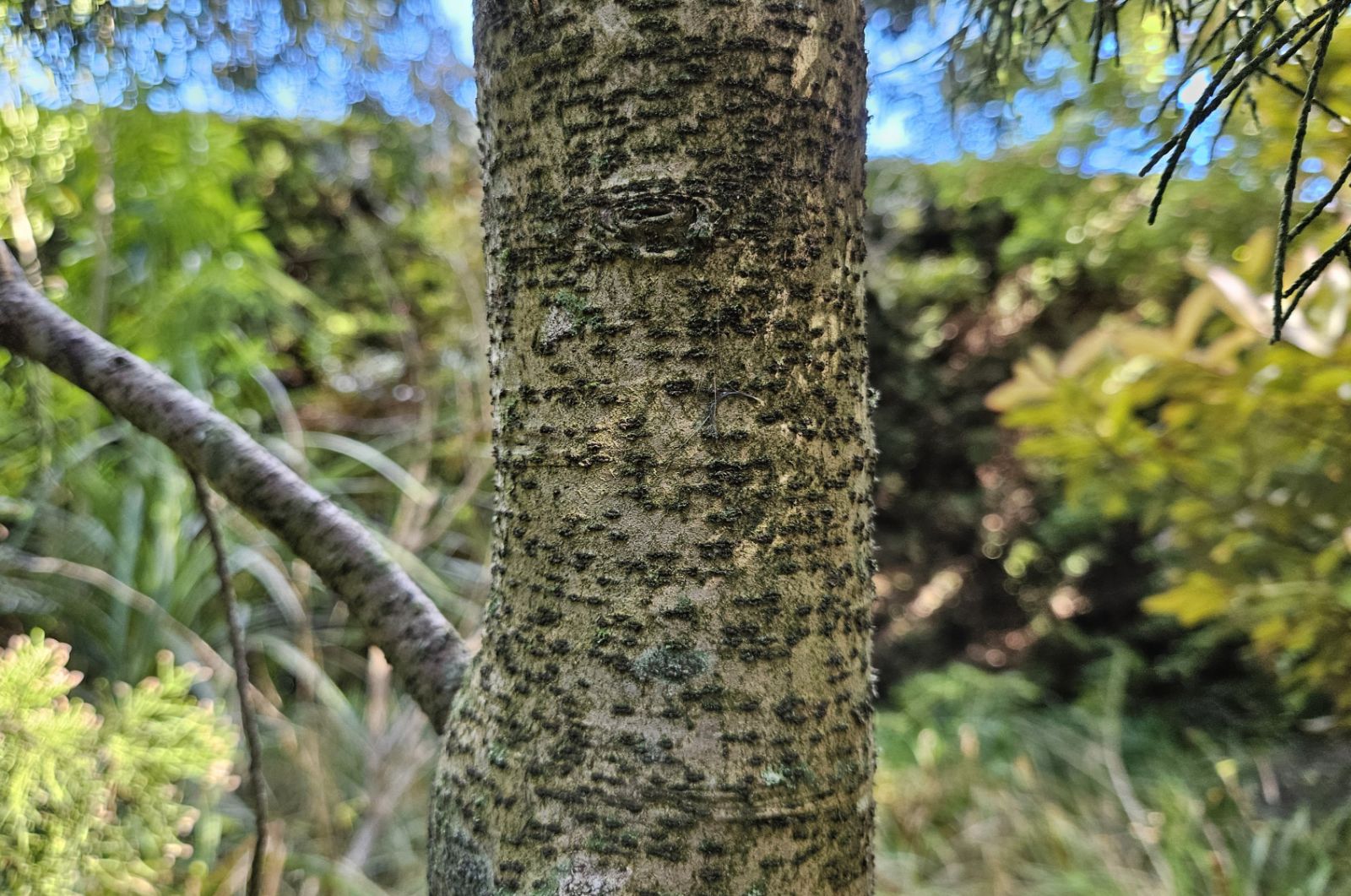Lepidothamnus intermedius
Credits
Article from New Trees by John Grimshaw & Ross Bayton
Recommended citation
'Lepidothamnus intermedius' from the website Trees and Shrubs Online (treesandshrubsonline.
Tree to 15 m, 30–60 cm dbh. Bark brownish grey, peeling in small flakes, reddish brown underneath. Branches spreading. Juvenile leaves spreading, 9–15 mm, narrowly linear-subulate, acute, recurved. Intermediate leaves shorter, wider, transitioning into mature leaves. Mature leaves scale-like, densely imbricate, appressed to the stem in apparently four rows, 1.5–3 mm long, rhomboid, blunt, very thick, keeled. Dioecious. Male strobili solitary but abundant, 5–6 2 mm, at the tips of branchlets. Ovules solitary, terminal on branchlet tips. Seeds 3–5 mm, black, with short red aril. Allan 1961, Salmon 1996, Metcalf 2000. Distribution NEW ZEALAND: North Is., South Is., Stewart Is. Habitat Lowland, montane and subalpine forest, in wet or very wet conditions, 0–900 m asl. USDA Hardiness Zone 9. Conservation status Lower Risk. Illustration Allan 1961, Salmon 1996, Metcalf 2000; NT445. Cross-reference K114 (as Dacrydium intermedium).
Lepidothamnus intermedius is extremely rare in cultivation, with only one specimen having been traced in our research, growing at Tregrehan. This was planted in 1995 and is now 3 m tall, forming a narrow column (T. Hudson, pers. comm. 2007). It is one of the obscure gymnosperms that Tom Hudson calls ‘New Zealand swamp lurkers’, best suited to mild areas with very high rainfall. It is unlikely to make a significant tree in our area.

